When Lightroom starts for the first time, its defult is to create a new catalog on the startup drive, with the default catalog name Lightroom 2 Catalog.lrcat in the the Pictures > Lightroom folder. The first step is to save the catalog where you want it, with a name that you can live with for a long time. Keep in mind that this is not a catalog for a single assignment, and need not be just for this class. The benefit of Lightroom comes from your ability to find and work with any image at any time.
When you start Lightroom, you either get a default catalog or a dialog box asking you which catalog you'd like to open. Since you are just starting, neither choice is what you want. If a catalog opens, choose File > New Catalog...; If the dialog opens, click Create New Catalog....
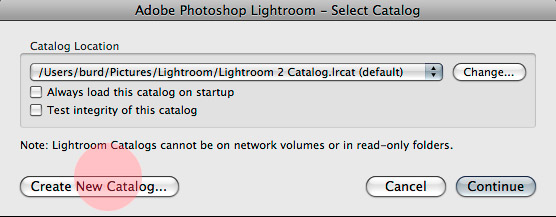
Then choose a location for the catalog and give it a name. Now would be a good time to quit Lightroom, then go to your hard drive and find the catalog you just created, just so you know it is where you think it is, and just so you are sure that it's the catalog you are working in. Open your catalog.
These are the preferred settings for working with Lightroom on a public computer when you expect to keep your catalog and files on your own hard drive. Make sure you are running your catalog from its final location, when you change these settings. You will make other choices if you are running Lightroom on your own computer, or working from flash drive data. Please see these notes on other workflows.
Start by keeping Lightroom from creating a new catalog on the startup drive when it first launches. Choose "Prompt me. . ." as the default Catalog.
From Lightroom > Preferences...
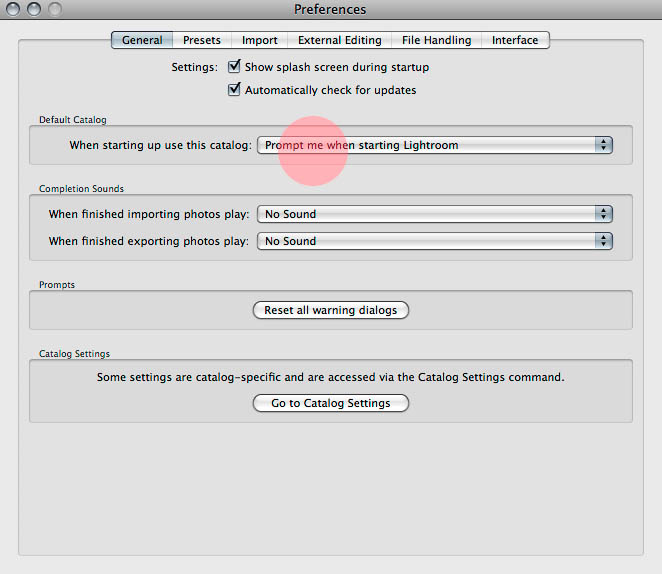
Next, tell Lightroom that you'd like to save your presets and templates with your catalog instead of on the startup drive. This will preserve your presets, templates, and settings when moving your catalog from one system to another:
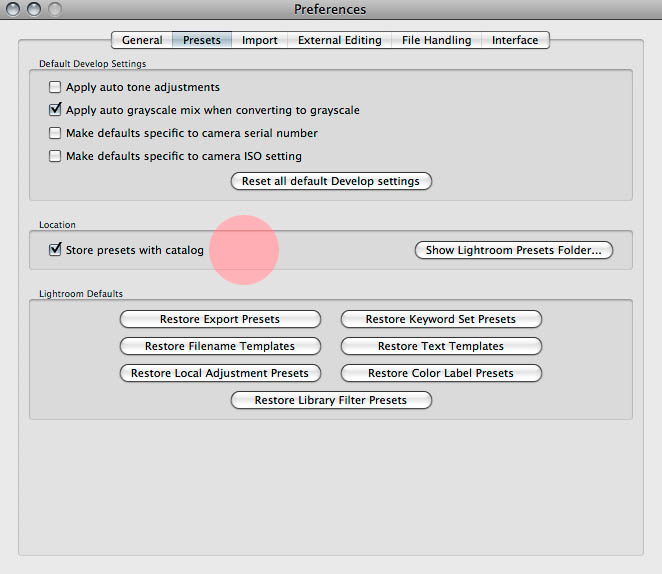
Because you want your derivative files to be compatible with other file systems, don't let Lightroom permit these characters, even when you forget and include them in a filename:
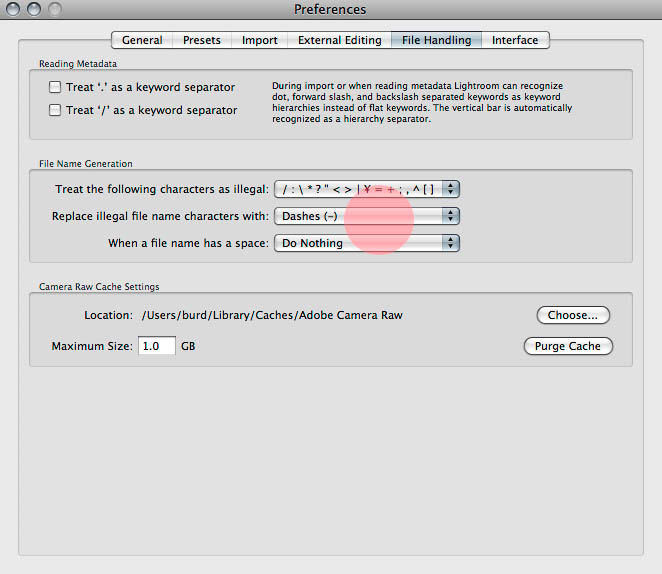
Quit and re-start Lightroom now, to make sure it is playing by the new rules.
Finally, these two settings will allow you to save metadata changes into your files, even if you are working with non-raw originals. Be aware that when you include develop settings in a jpeg or tif file that it will open to Camera Raw in Photoshop. For this reason, you should treat original jpegs the same way as you would treat a raw or dng— always export from the original to work on the file. Never work on the original jpeg!
Lightroom defaults to saving all metadata and settings in its own database. If you choose to Automatically write changes into XMP that information will be embedded in your files.
From Lightroom > Catalog Settings...
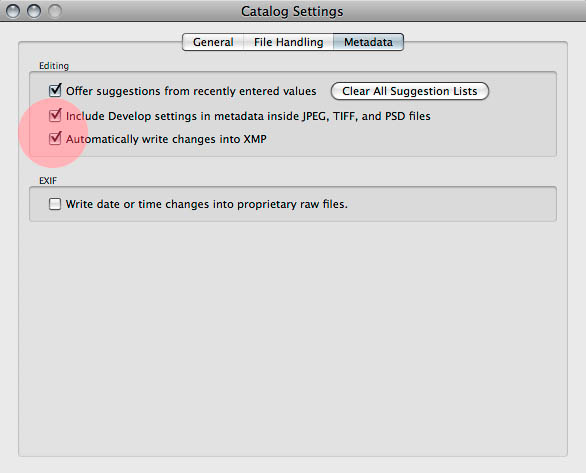
Access the file naming setup through the export panel, File > Export... or by clicking the export button in Library. You create the new template or edit an existing template through the File Naming pull-down:
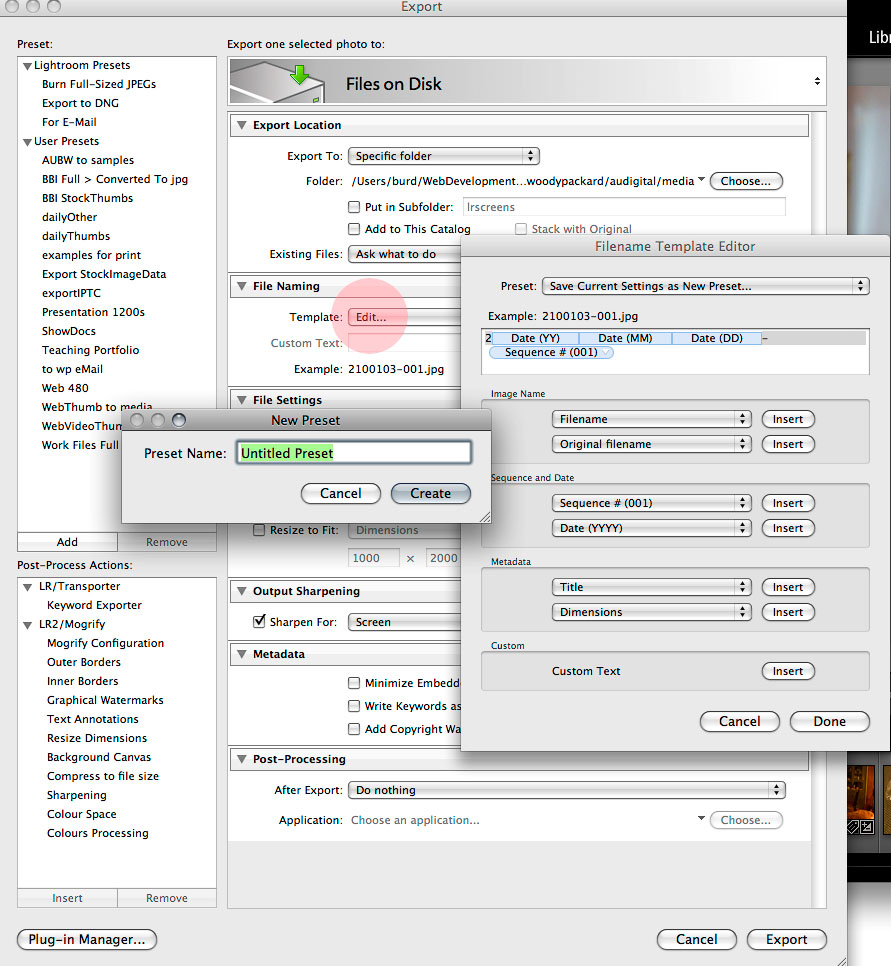
Choose a strategy that works for you, and which you can usually set-and-forget. Here is my system. The initial "2" allows me to distinguish work spanning two centuries (and millenia), something that most of you won't need to do: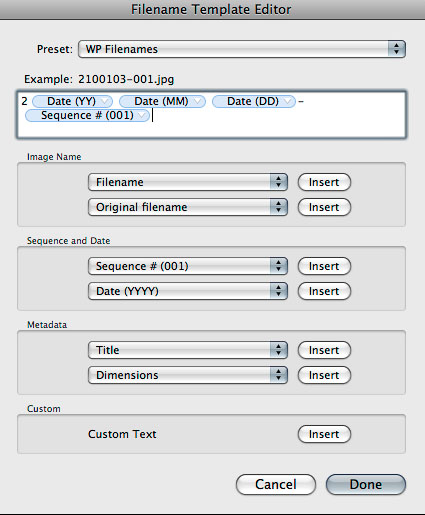
Once set, you can use this for the default for importing, which, combined with the use of a metadata template, keeps everything tidy and systematic.
Use Metadata Templates to automate the embedding of information, or metadata, into you files. Once set up, your can apply them to one or a thousand images at a time by choosing the Replace Metadata or Append Metadata options. You can also choose a Metadata Template as an option when you import images from your camera, taking care of this important but routine business automatically.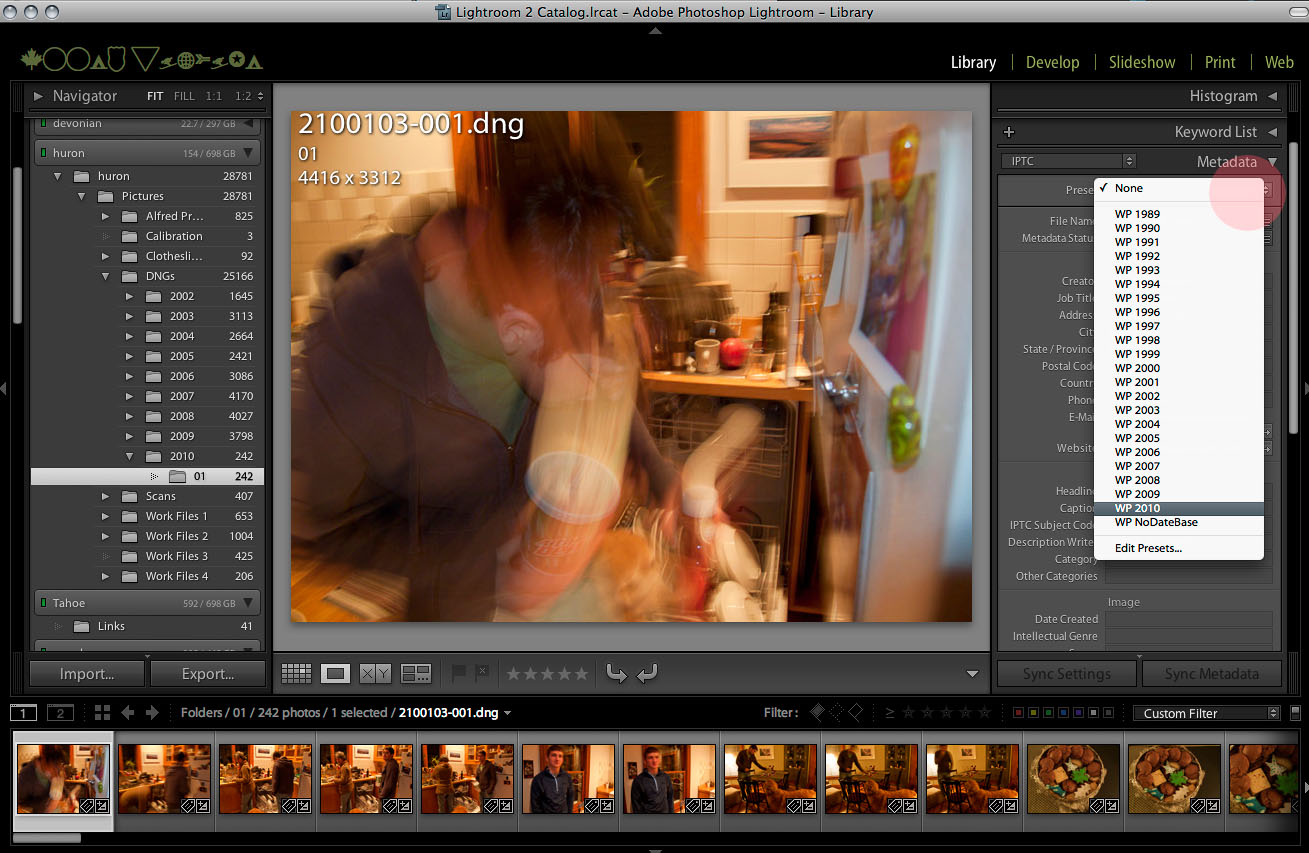
Fill out the fields that you always want to be filled. Leave image-specific fields blank, to be filled in by the shoot or image.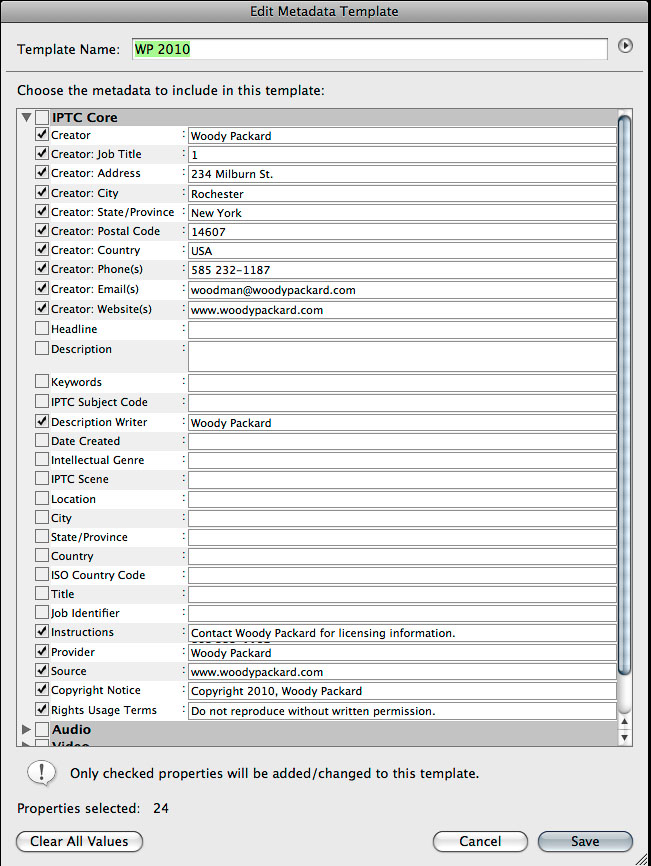
To save your settings for commonly used export settings, use Export Templates, which control everything from where you send your files to how much they are sharpened. Other important parameters include file naming, file format, image size, and whether to include the file's metadata.
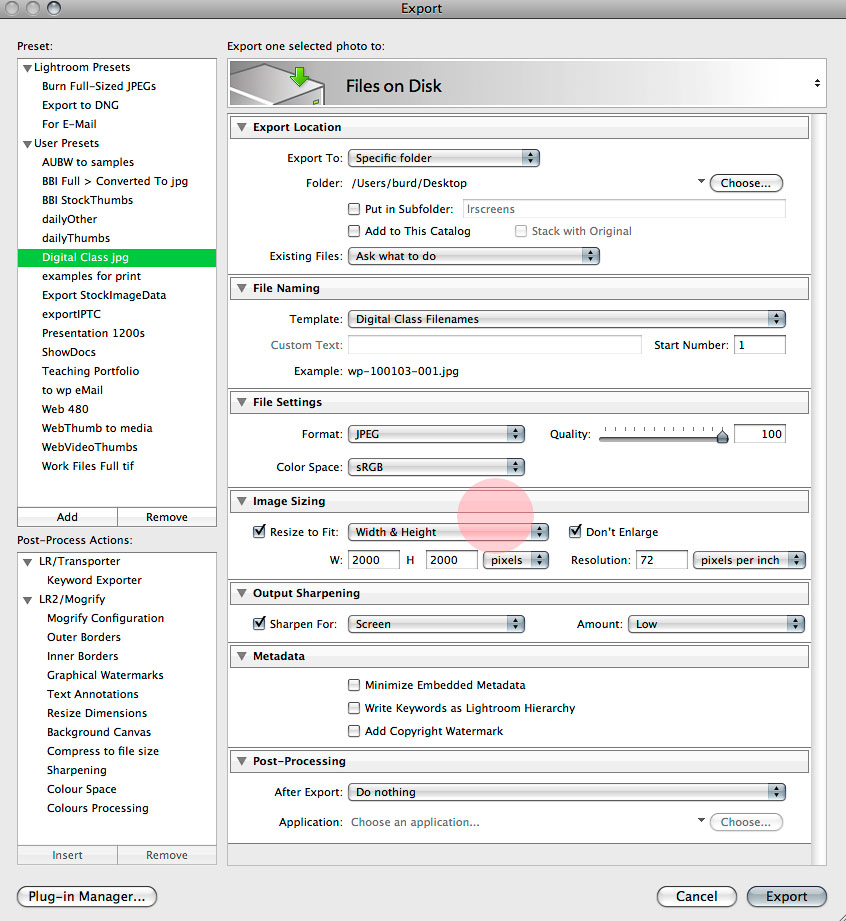
Here are a few things that these templates are really good for:
- converting images for the web, both full size and thumbnails
- creating full size, 16 bit work files for use in Photoshop
- reducing large files to email
- resizing, reformatting, and renaming your images to make your instructor's life easier
Currently (early 2010) the best advice is to avoid working directly to a flash drive, memory stick, or other memory device that is intended to back up or transport data. Many users have reported data corruption and loss, and although this situation may change, it is considered to be dangerous today. If you do not have an external or portable hard drive to work from, your best bet is to create a folder on the local hard drive where you keep both catalog and image files. When you are done, copy the entire folder to the flash drive. When you return to work on another computer, copy the entire folder back to the hard drive and work from there until you are done. Both the Lightroom settings and your catalog settings should remain the same as noted above. Please, please, please, don't forget to make a backup of this data regularly.
Your Own ComputerIf you are using your own computer the following change will simplify your use of Lightroom. First, under Lightroom > Preferences... > General, choose your catalog from the popup as the default catalog when opening Lightroom, which will cause Lightroom to skip this step. Unless you have a reason to change them, the other choices are still probably the best.